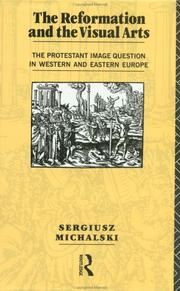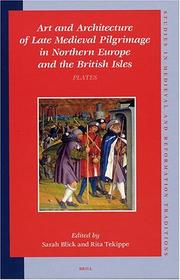| Listing 1 - 10 of 268 | << page >> |
Sort by
|
Book
ISBN: 3110546507 3110546841 9783110546507 9783110546842 9783110543742 3110543745 Year: 2019 Publisher: Berlin Boston
Abstract | Keywords | Export | Availability | Bookmark
 Loading...
Loading...Choose an application
- Reference Manager
- EndNote
- RefWorks (Direct export to RefWorks)
It has long been an accepted assumption that the abstracted mode of visual representation that emerged in late antiquity reflected a collective shift from the outer-directed and 'material' world-view of classical antiquity to an inner-directed, 'spiritual' mentality informed by Christianity: the purpose of this volume is to offer a more nuanced and diverse image of the nature and meanings of abstraction and symbolism in late antique and early medieval art, beyond normative intepretation models, and from a number of different methodological and interpretative perspectives. In ten chapters, ten authors specialised in various fields of late-antique and Byzantine art explore the historiographical background of the 'spiritual' interpretation paradigm, neuroscientific and theological dimensions of Christian visual aesthetics, meanings and motive factors behind apparently wholly abstract and aniconic compositions, symbolic motifs and schemes for visualising cosmic order and the cosmic state of Christ, and the re-use of symbolic Greco-Roman themes in Christian contexts. The result is a multi-focal image of late antique abstraction and symbolism that illuminates the heterogeneity and complexity of the phenomena and of their study.
Book
Year: 2021 Publisher: Uppsala, Sweden : Kriterium,
Abstract | Keywords | Export | Availability | Bookmark
 Loading...
Loading...Choose an application
- Reference Manager
- EndNote
- RefWorks (Direct export to RefWorks)
This study investigates the pictorial world of the medieval Vadstena Abbey church. The interior of the church was filled with altars and images that had the three separated groups of viewers in mind: the 60 nuns, the 25 conventual brothers and the numerous pilgrims coming to visit the shrine of Saint Birgitta. The pilgrims faced a pictorial message where the role of saint Birgitta was emphasized, but still one among all the other saints. The images directed to the nuns and the brothers accentuated the role of the Virgin Mary as the exemplarily follower of Christ. Furthermore, all the church interior was furnished to enhance the position of the nuns, i.e. that this monastic foundation was made primarily for women. Birgittinerna och deras bilder lägger fram resultat från flera forskningsprojekt om det senmedeltida klostret i Vadstena av konstvetaren Eva Lindqvist Sandgren. Det presenterade materialet grundar sig på studier om nunnornas boktillverkning och deras textilproduktion, samt en undersökning av de skilda bildsfärer som olika kyrkobesökare/brukare kunde ta del av (eller var utestängda från) genom kyrkorummets uppdelning i tre tydligt separerade rumsliga enheter: nunnornas upphöjda och inhägnade korläktare, klosterbrödernas kor och läktargångar samt lekfolkets kringgärdade yta i mitten av det stora kyrkorummet. Författaren använder sig av ett material som spänner från stort till smått, från kyrkans kalkstensmurar och ända ned till stygnnivå i broderierna.
Book
Year: 2011 Publisher: [Place of publication not identified] : Perlego ; : Project Gutenberg,
Abstract | Keywords | Export | Availability | Bookmark
 Loading...
Loading...Choose an application
- Reference Manager
- EndNote
- RefWorks (Direct export to RefWorks)
Book
Abstract | Keywords | Export | Availability | Bookmark
 Loading...
Loading...Choose an application
- Reference Manager
- EndNote
- RefWorks (Direct export to RefWorks)
Book
ISBN: 0567685152 0567685136 Year: 2020 Publisher: [London, England] : [London, England] : T & T Clark, Bloomsbury Publishing,
Abstract | Keywords | Export | Availability | Bookmark
 Loading...
Loading...Choose an application
- Reference Manager
- EndNote
- RefWorks (Direct export to RefWorks)
"A one-volume introduction to and overview of Christian art, from its earliest history to the present day. Diane Apostolos-Cappadona begins by examining how art and Christianity have intersected throughout history, and charts this tumultuous relationship that has yielded some of the greatest outpourings of human creativity. To introduce readers to the way a painting can be read Apostolos-Cappadona begins with an analysis of a painting of the Adoration of the Magi, helping readers to see how they can interpret for themselves the signs, symbols and figures that the book covers. In the more-than 1000 entries that follow Apostolos-Cappadona gives readers an expert overview of all the frequently used symbols and motifs in Christian art as well as the various saints, historical figures, religious events, and biblical scenes most frequently depicted. Readers are introduced to the ways in which religious paintings are often "coded'" such as what a lily means in a picture of Mary, how a goldfinch can be "Christological", or how the presence of an Eagle means it is likely to be a picture of St John. The entries are organized by topic, so that students and beginners can easily find their way to discussion of the themes and motifs they see before them when looking at a painting."--

ISBN: 1134921039 1280069503 020341425X 0203314956 9780203314951 9780203414255 9780415065122 0415065127 0203722493 9780203722497 9781280069505 9781134921027 1134921020 9781134920983 1134920989 9781134921034 9780415514842 Year: 1993 Publisher: London New York Routledge
Abstract | Keywords | Export | Availability | Bookmark
 Loading...
Loading...Choose an application
- Reference Manager
- EndNote
- RefWorks (Direct export to RefWorks)
Covering a vast geographical and chronological span, and bringing new and exciting material to light, The Reformation and the Visual Arts provides a unique overview of religious images and iconoclasm, starting with the consequences of the Byzantine image controversy and ending with the Eastern Orthodox churches of the nineteenth century. The author argues that the image question played a large role in the divisions within European Protestantism and was intricately connected with the Eucharist controversy. He analyses the positions of the major Protestant reformers - Luther, Zwingli,

ISBN: 1280906960 9786610906963 1429427795 9781429427791 6610906963 9004123326 9789004123328 Year: 2005 Publisher: Leiden Boston Brill
Abstract | Keywords | Export | Availability | Bookmark
 Loading...
Loading...Choose an application
- Reference Manager
- EndNote
- RefWorks (Direct export to RefWorks)
Book
ISBN: 0271093013 9780271093017 Year: 2022 Publisher: University Park
Abstract | Keywords | Export | Availability | Bookmark
 Loading...
Loading...Choose an application
- Reference Manager
- EndNote
- RefWorks (Direct export to RefWorks)
This volume assesses how current approaches to iconology and iconography break new ground in understanding the signification and reception of medieval images, both in their own time and in the modern world.Framed by critical essays that apply explicitly historiographical and sociopolitical perspectives to key moments in the evolution of the field, the volume’s case studies focus on how iconographic meaning is shaped by factors such as medieval modes of dialectical thought, the problem of representing time, the movement of the viewer in space, the fragmentation and injury of both image and subject, and the complex strategy of comparing distant cultural paradigms. The contributions are linked by a commitment to understanding how medieval images made meaning; to highlighting the heuristic value of new perspectives and methods in exploring the work of the image in both the Middle Ages and our own time; and to recognizing how subtle entanglements between scholarship and society can provoke mutual and unexpected transformations in both. Collectively, the essays demonstrate the expansiveness, flexibility, and dynamism of iconographic studies as a scholarly field that is still heartily engaged in the challenge of its own remaking.Along with the volume editors, the contributors include Madeline H. Caviness, Beatrice Kitzinger, Aden Kumler, Christopher R. Lakey, Glenn Peers, Jennifer Purtle, and Elizabeth Sears.
Book
Year: 2023 Publisher: Basel, Switzerland : MDPI - Multidisciplinary Digital Publishing Institute,
Abstract | Keywords | Export | Availability | Bookmark
 Loading...
Loading...Choose an application
- Reference Manager
- EndNote
- RefWorks (Direct export to RefWorks)
This reprint aims to investigate some of the numerous ways in which Christianity venerated and represented the Virgin Mary in the Middle Ages and the Renaissance. Fifteen researchers in various areas of the Arts and Humanities have brought together here their efforts to address in part this inexhaustible objective. The reprint is divided into two main parts. In one of them, composed of six chapters, we study some of the several ways in which the Christian faithful rendered worship and devotion to the Virgin Mary during the more than one thousand years under consideration. The other part, made up of seven chapters, analyzes various iconographic manifestations through which medieval and Renaissance Christians made their devotion to the mother of Christ visible in pictorial or sculptural forms. Therefore, this reprint will be very useful not only for specialists in Christian studies, especially in Marian themes but also for those interested in the development of the societies and cultures of medieval and Renaissance Europe.
Book
ISBN: 1399522884 Year: 2023 Publisher: England : Edinburgh University Press Ltd,
Abstract | Keywords | Export | Availability | Bookmark
 Loading...
Loading...Choose an application
- Reference Manager
- EndNote
- RefWorks (Direct export to RefWorks)
Examines the meaning of five theopolitical figures - scripture, prophecy, oath, charisma and hospitality - in contemporary philosophical-political discourse.
| Listing 1 - 10 of 268 | << page >> |
Sort by
|

 Search
Search Feedback
Feedback About UniCat
About UniCat  Help
Help News
News